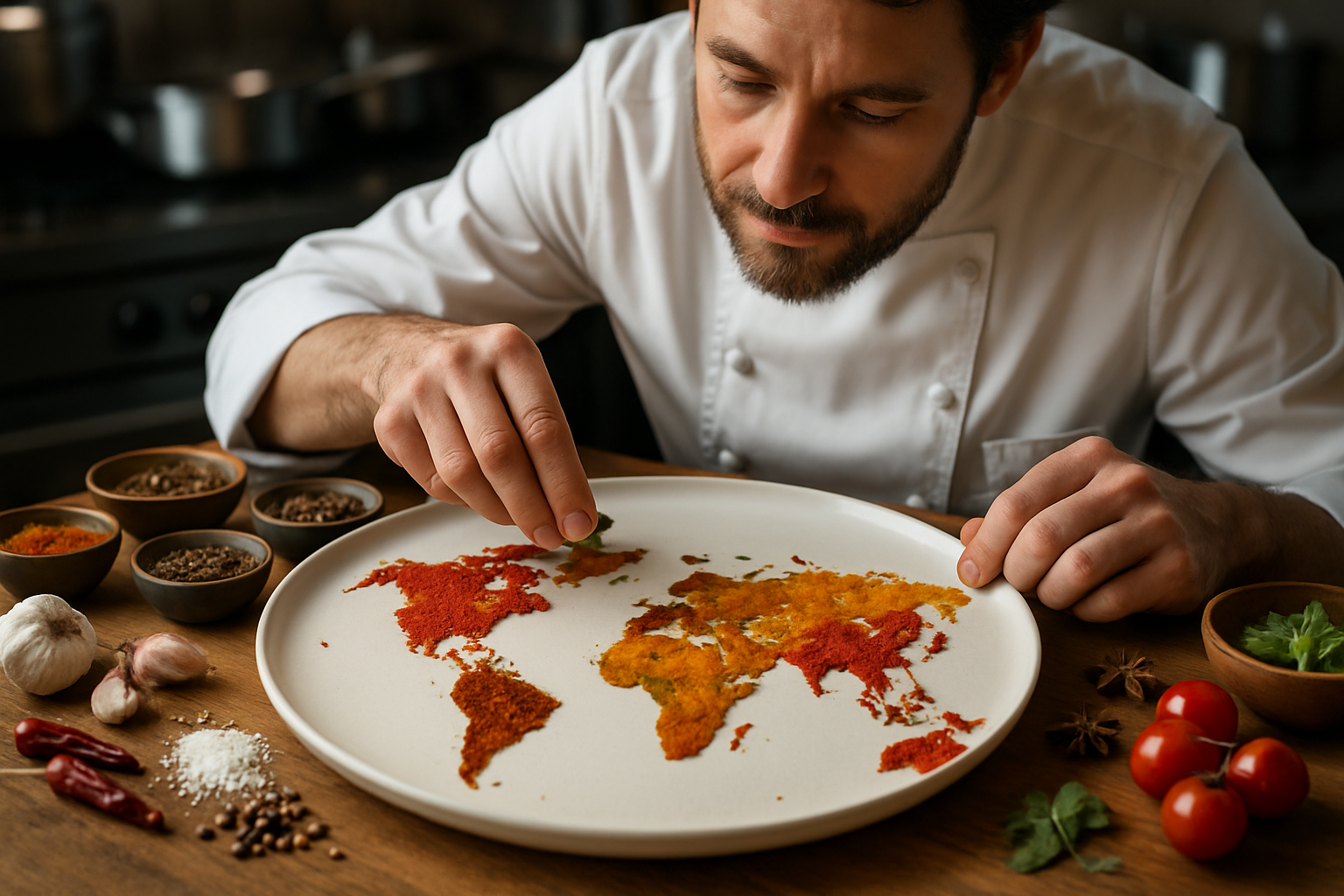Culinary Cartography: Mapping Flavors Across Borders
Embark on a gastronomic journey that transcends geographical boundaries and explores the intricate connections between cuisines worldwide. Discover how flavors migrate, evolve, and intertwine, creating a rich tapestry of global gastronomy. From spice routes to modern fusion, this culinary cartography will challenge your taste buds and expand your culinary horizons.

Culinary Colonialism: A Bittersweet Legacy
Colonial expansion left an indelible mark on global cuisine, for better or worse. European powers introduced new ingredients and cooking methods to their colonies, while also bringing exotic flavors back home. The potato’s journey from South America to Europe revolutionized diets and agriculture. Meanwhile, crops like sugar cane and coffee became global commodities, reshaping economies and culinary landscapes. This culinary colonialism resulted in fusion cuisines like Indo-French in Pondicherry or Macanese in Macau, where local ingredients met European techniques. While acknowledging the problematic aspects of colonialism, we can appreciate the diverse culinary traditions that emerged from these historical interactions.
Cross-Pollination of Culinary Techniques
As cuisines travel, cooking techniques often migrate and adapt to new environments. The art of barbecue, with its roots in Caribbean and Native American traditions, has evolved into distinct styles across the United States and beyond. Similarly, the Japanese technique of tempura was influenced by Portuguese fritters, showcasing how culinary methods can be adopted and transformed. In recent years, sous-vide cooking, originally developed for food preservation, has become a staple in high-end kitchens worldwide. This cross-pollination of techniques continues to push the boundaries of what’s possible in the kitchen, inspiring chefs to blend traditions and create innovative dishes.
Ingredient Migration and Adaptation
The global movement of ingredients has led to fascinating adaptations in local cuisines. Tomatoes, native to the Americas, became integral to Italian cuisine only after the Columbian Exchange. Today, we see similar adaptations with ingredients like quinoa and açaí, which have found their way into health-conscious diets worldwide. Chefs and home cooks alike are experimenting with these “new” ingredients, incorporating them into traditional recipes or creating entirely new dishes. This ongoing ingredient migration not only diversifies our diets but also challenges our perceptions of what constitutes “authentic” cuisine.
The Digital Age of Culinary Exchange
In the era of social media and online cooking platforms, culinary exchange has accelerated at an unprecedented pace. Food trends like Korean corn dogs or Japanese souffle pancakes can go viral globally within days. This digital connectivity allows home cooks to access recipes and techniques from around the world, fostering a new wave of fusion cooking. Virtual cooking classes and food-focused social media accounts are breaking down barriers, allowing for real-time culinary exchange across continents. As a result, our collective palate is expanding, and the lines between cuisines are becoming increasingly blurred, giving rise to exciting new flavor combinations and cooking styles.
Culinary Cartography: Tips for Flavor Explorers
• Start a spice world tour: Explore a new spice each week, learning its origin and traditional uses.
• Host international potlucks: Encourage friends to bring dishes from different cultures, fostering culinary exchange.
• Follow global food bloggers: Discover authentic recipes and techniques from various cuisines.
• Experiment with fusion: Try combining cooking methods or ingredients from different culinary traditions.
• Learn the history behind your favorite dishes: Understanding their origins can deepen your appreciation and inspire new ideas.
• Attend food festivals: Experience diverse cuisines and learn about culinary traditions firsthand.
• Challenge yourself with unfamiliar ingredients: Pick up something new at an international market and learn how to use it.
As we map the intricate connections between global cuisines, we discover that food is more than sustenance—it’s a universal language that tells the story of human migration, cultural exchange, and innovation. By exploring these culinary connections, we not only expand our palates but also gain a deeper understanding of our shared history and the endless possibilities for future gastronomic adventures. So, grab your metaphorical passport and embark on a journey of flavor—your next culinary discovery might just be a meal away.





